From making research papers to developing marketing strategies, brainstorming would always be involved. But not everyone prefers loud noises in coming up with ideas; hence there's the brainwriting technique for those who prefer the quiet idea generation. In some cases, others might have difficulty thinking when others also share their thoughts.
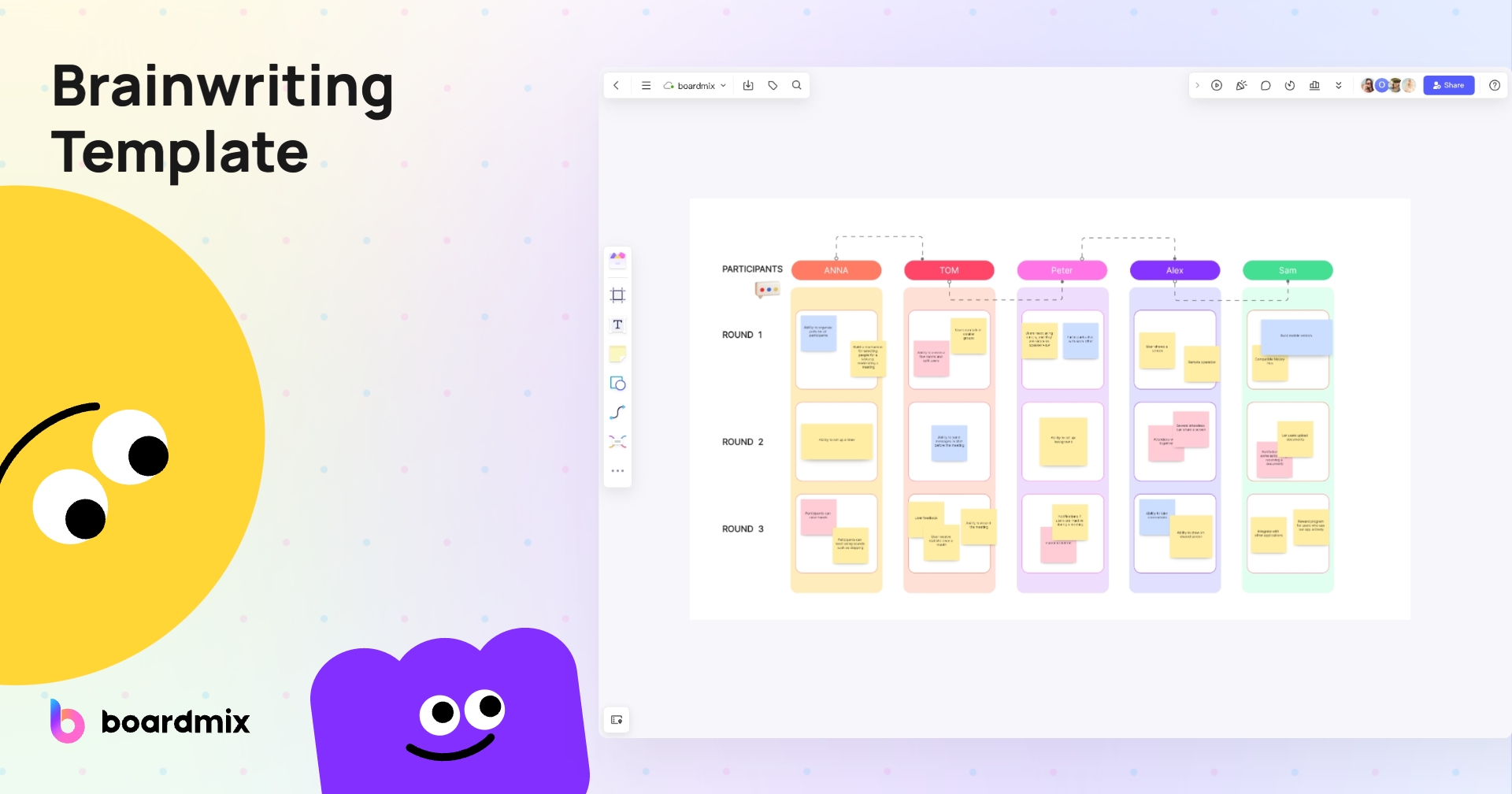
Read this article to learn more about how this technique works and how to create your brainwriting template to collate ideas among several people efficiently. This technique promotes better collaboration and results in interesting and innovative ideas.
What is brainwriting?
Definition and explanation
Brainwriting refers to an idea-generation technique that stimulates creativity among organization members. Instead of people talking to each other, brainwriting invites members to list their ideas on paper or sticky notes. With technological advances today, you can make a brain-writing example using your mobile phone or computer.
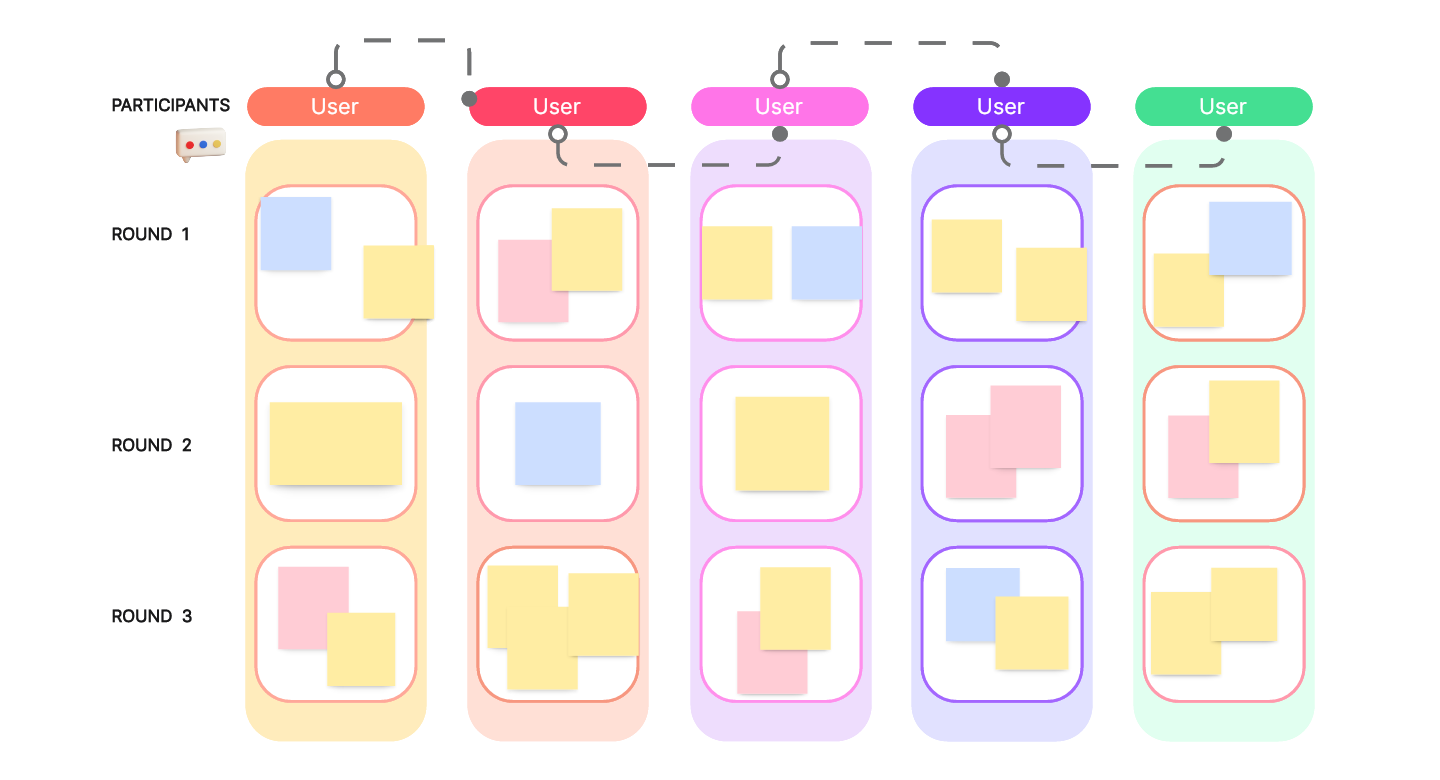
These notes are then passed to team members and they add more ideas. The process generally takes about ten to fifteen minutes depending on the scope of the topic. After that, the team lead collects all these sticky notes and discusses every concept as a group.
Your team can utilize a brainwriting template during the process. In most cases, these editable dashboards allow edit access to team members. With this, you won't need any physical paper to proceed with the brainwriting.
Difference between brainstorming and brainwriting
While brainstorming and brainwriting have the same purpose: to generate ideas, the two also differ in various ways. For one, brainstorming is a strategy used in the corporate world for years. The technique has been a great help to organizations generate creative ideas. During brainstorming, participants will have a topic in which they must develop ideas and share them verbally among team members.
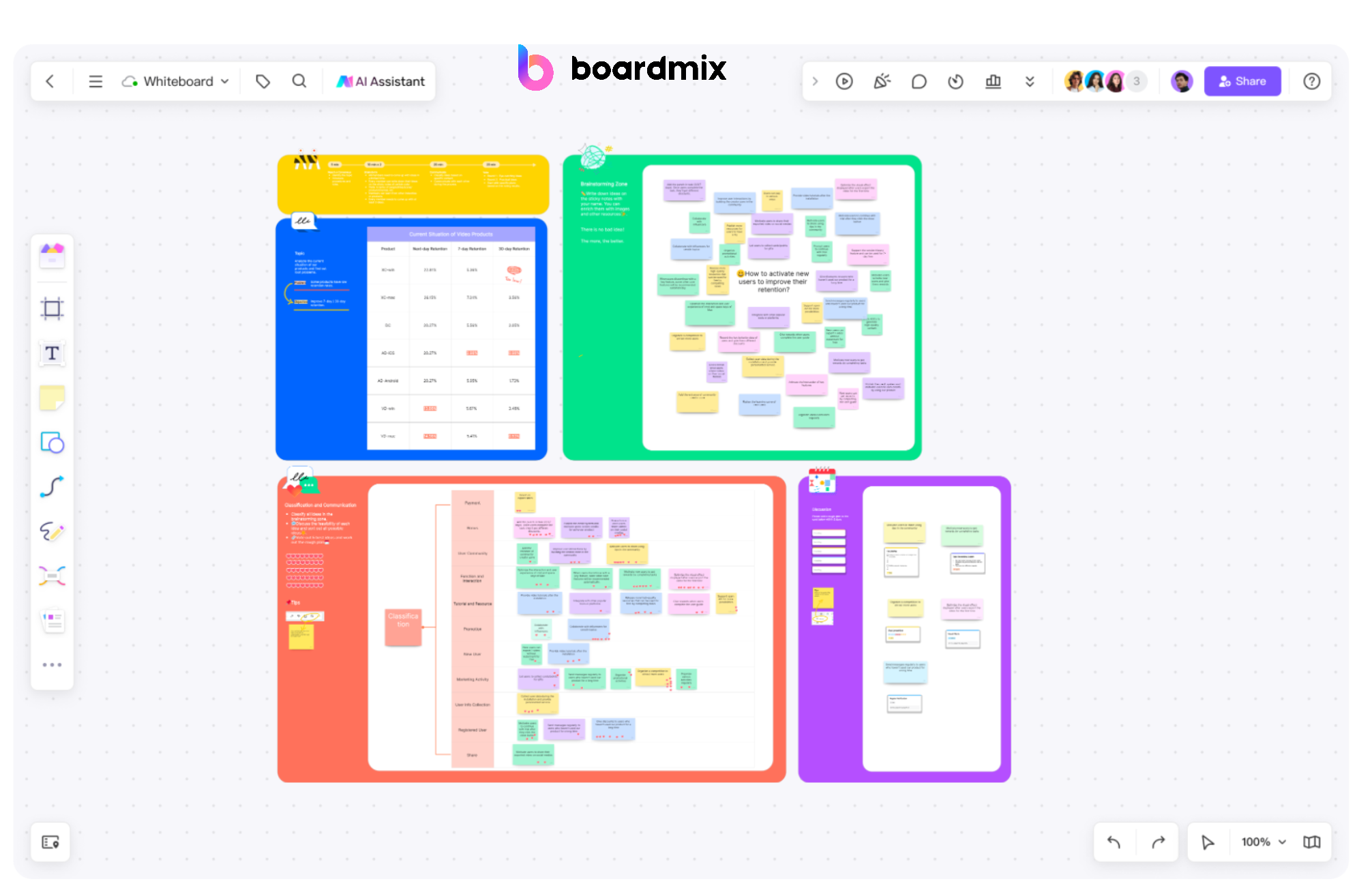
For many, brainwriting is the upgraded version of brainstorming. The participants will write their thoughts and suggestions related to a topic. It's an alternative strategy to promote authentic collaboration and give an equal platform for all members to engage. Furthermore, it allows members to think and generate ideas quietly.
There are also techniques involved in this approach, including the 6 3 5 brainwriting. This means there will be six people who will have a task to list three ideas within five minutes for each idea. After five minutes, every participant must pass the note to the next member and write three more ideas. This will have six rounds allowing all six members to write their thoughts on every sticky note.
You can use other techniques, which include collaborative brainwriting and remote brainwriting. Regardless of our choice, these three techniques have the same process: for participants to write their thoughts instead of relaying them verbally.
Benefits of brainwriting
If this is your first time knowing and seeing a brain-writing example, you might have second thoughts about applying the technique in your organization. Here are some excellent points to convince you to try brainwriting.
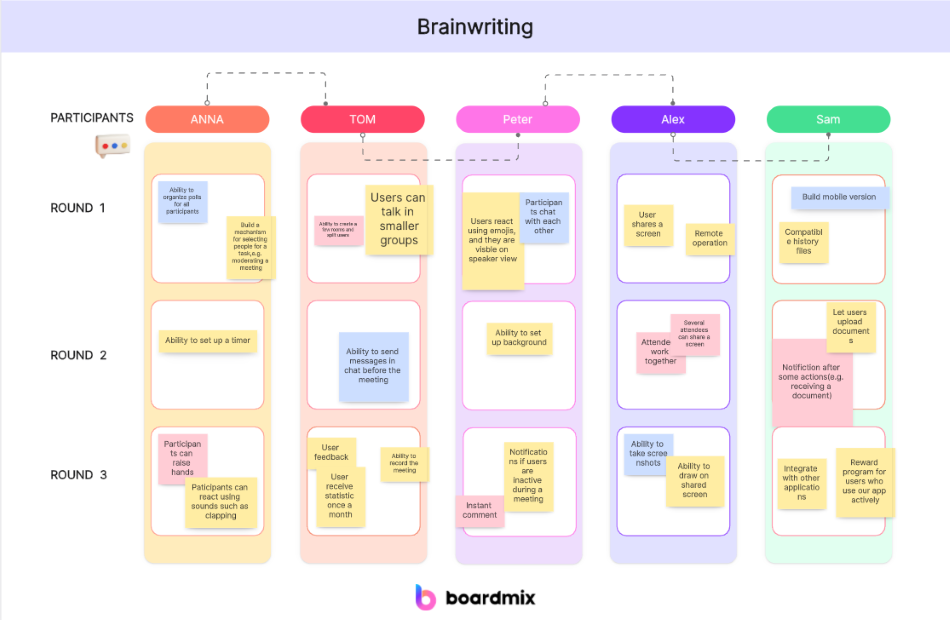
- Equal participation. The idea-generation process starts with every participant being silent and thinking of ideas independently. This means no one will dominate the floor space. Moreover, all participants have the same amount of time to organize their thoughts.
- Quick idea generation. In most cases, brainwriting has time limits allowing teams to think quickly. This is an excellent way to have creative juices flowing for organizations that have to meet deadlines.
- Promotes creativity. As you already know, 6 3 5 brainwriting is a technique used with sticky notes being passed from one participant to another. As participants move through the process, evident and common ideas will be taken. This will force members to think outside the box and generate innovative solutions and fresh ideas.
- Silence can be a source of better ideas. Unlike brainstorming, where participants take turns talking, brainwriting will allow participants to take their time and process their thoughts before writing them. Silence inspires innovative thinking and stimulates the imagination.
Brainwriting best practices
Looking at a brainwriting template will be helpful in how you can perform a similar approach in your team's idea generation. Meanwhile, you can also adopt the following best practices for an effective brainwriting outcome.
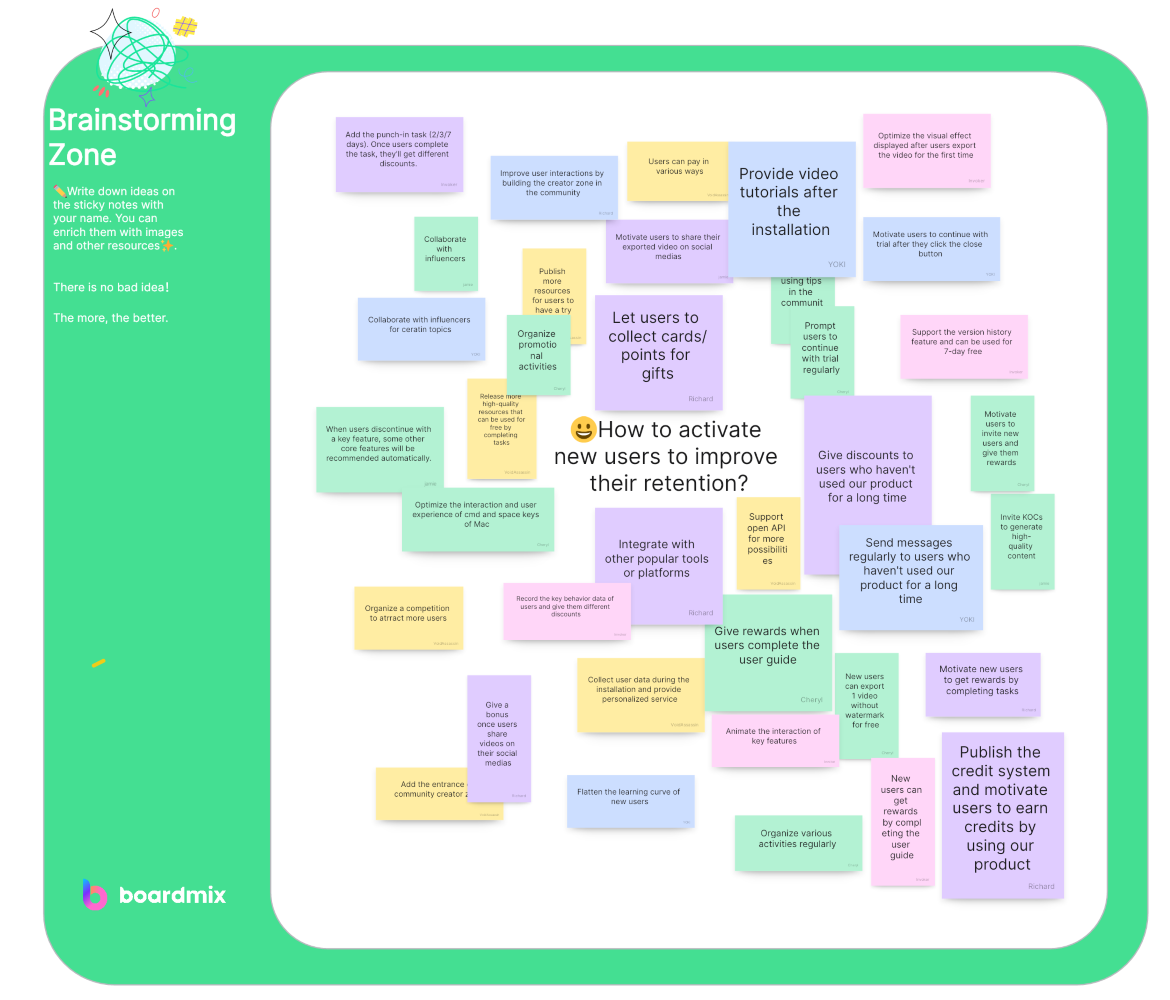
Preparing for a brainwriting session
The first is to define the topic. Ensure to introduce the topic. Next is to identify the participants. Using a brain-writing example, you can add the participants' names to the columns in the template. If you're using the 6 3 5 brainwriting, you're expected to have six participants. Most digital brainwriting templates allow you to invite the participants into your dashboard or template.
How do you write brainwriting?
Brainwriting is an effective and creative method for idea generation. It's a technique where team members write down their ideas about a certain topic, then pass their paper to someone else who reads it and adds their thoughts. Here's a step-by-step guide on how to conduct a brainwriting session:
-
Assemble Your Team: Gather your team together. Brainwriting can be done with any number of people, but a group of six to twelve participants is often ideal.
-
Explain the Process: Explain to your team what brainwriting is and how it works. Make sure everyone understands that they'll be writing down their ideas, and then passing them on for others to build upon.
-
Set the Topic: Clearly define the problem or topic you want your team to focus on. Make sure it's specific enough that people can come up with concrete ideas but broad enough that there are multiple possible solutions.
-
Start Writing: Give everyone a piece of paper and a pen, set a timer (usually for 5 minutes), and ask them to write down as many ideas as they can.
-
Pass the Papers: When the timer goes off, have everyone pass their papers to the person next to them.
-
Build on Others' Ideas: Set the timer again and ask everyone to read the ideas on the new paper they've received and add their ideas. They can either come up with entirely new concepts or build upon what's already there.
-
Repeat the Process: Continue this process of writing and passing until everyone has had a chance to add to each paper.
-
Discuss and Evaluate: Once all papers have made it around the room, discuss the ideas as a group. Evaluate which ones are most promising and decide on the next steps.
How to use BoardMix's brainwriting template
To utilize BoardMix's Brainwriting Template effectively, there are several key steps you should follow. First and foremost, gather your team and clearly define the problem or challenge you're facing. Everyone must understand the issue at hand to ensure productive brainstorming.

Once the problem has been established, introduce your team to BoardMix's Brainwriting Template. This tool is designed to encourage individual idea generation before group discussion, helping to prevent bias and promote a wide range of ideas. Each team member will have their own space on the template to jot down their thoughts and ideas.
The next step involves a period of silent brainwriting. Set a timer for a specific amount of time - usually around 5-10 minutes - during which each team member writes down as many ideas as they can in their designated area. The focus here is on quantity over quality; the goal is to generate a broad array of ideas, no matter how outlandish they may seem.
After the brainwriting session, it's time for discussion. Each team member will present their ideas one by one, explaining their thought process and the potential benefits of each idea. This is where the real magic happens - as each idea is discussed, it can spark new thoughts and concepts within the group, leading to even more innovative solutions.
The final step in using BoardMix's Brainwriting Template is evaluating and selecting the best ideas. As a group, discuss the merits of each idea and decide which ones are worth pursuing further. Remember, the aim isn't necessarily to find one perfect solution but rather to uncover a variety of potential paths forward
During brainwriting session
Encourage silent participation
Before setting up the timer, ensure no one among the participants is discussing the topic. The goal is to allow silence to fill the room to nurture everyone's creative process. It will not be brainwriting anymore if people are discussing their ideas.
Write down all ideas
Remember to set the timer to fifteen minutes. Within the given time, each participant must write three ideas. Continue the process until all six people write their thoughts on all six sticky notes. There are no wrong inputs here, but ensure that the ideas are related to the given topic. Otherwise, it will defeat the brainwriting process.
Separate idea generations and idea evaluation
Once all the ideas have been collected, assess all the inputs to know whether they answer the topic involved in brainwriting. This is where idea evaluation comes in. While you welcome all the thoughts written by the participants, that does not mean they are all significantly related to the main topic. You can quickly develop strategies to achieve organizational goals by evaluating these ideas.
After brainwriting session
Sorting ideas for effective implementation
The team must decide what to do with the final ideas. You can create another diagram to sort all the information accordingly. As you already know, the brainwriting inputs will significantly help implement the initiatives the group desires effectively.
Follow-up and feedback
Gather all the team members, use the vote, and sort features to determine which inputs are the most beneficial for the group. You can meet with your team this time, review the sorted ideas, and welcome feedback for better strategic planning. This phase might involve some talking and further discussion among the team members.
Most digital diagramming software allows you to create multiple diagrams besides the brainwriting template. You won't need to open more browsers to create a new diagram whenever you need to transfer all the final inputs from the brainwriting template to another diagram. It saves you effort and time especially if you’re beating deadlines.






